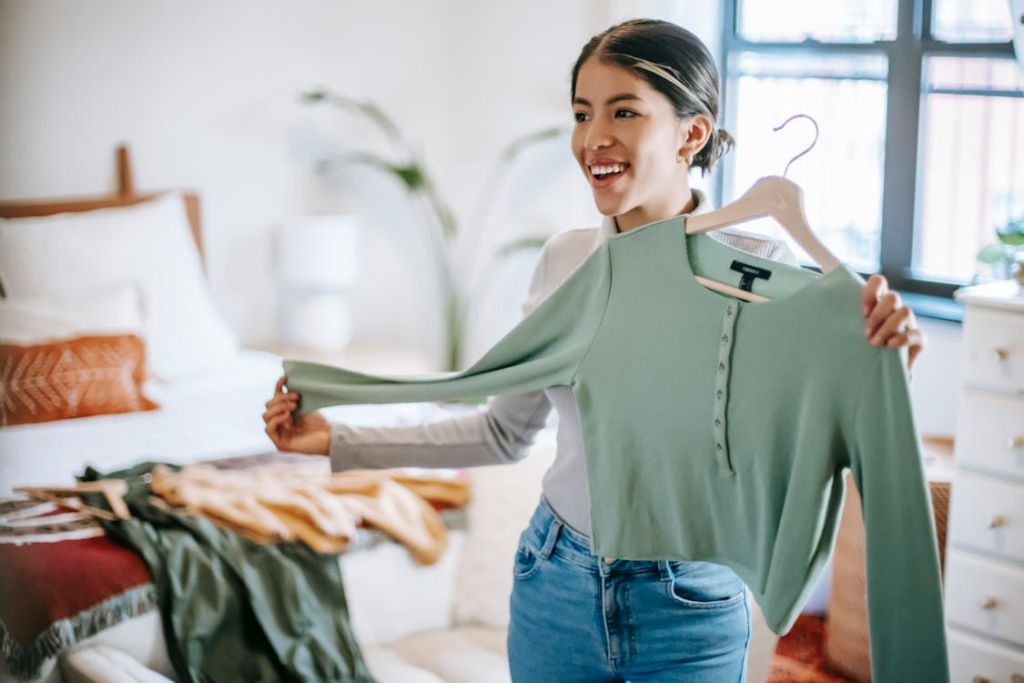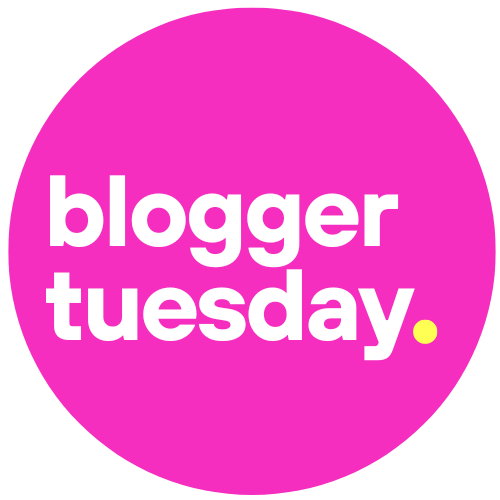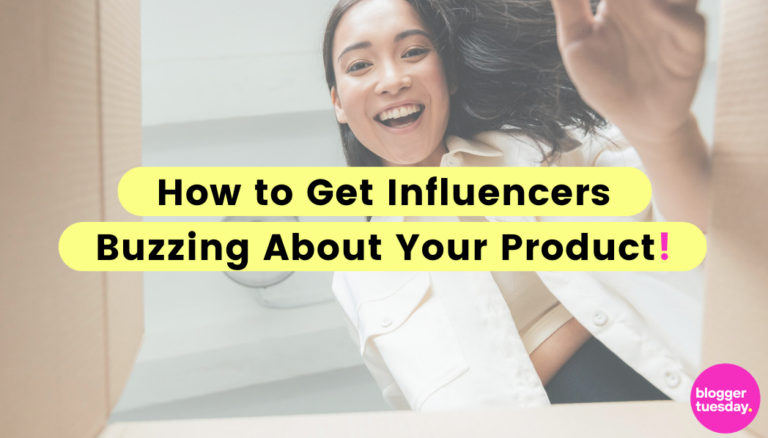
Influencers are worth more than $250 billion to global businesses according to Forbes, and the market is set to double to an eye-watering $500 billion by 2030.
Because of this, brands should care about influencers. They are probably the biggest marketing opportunity of the decade.
The problem, though, is that most influencers have limited time and energy. They are so busy creating content and engaging with followers that they can’t always focus on the companies in their niche.
That’s why it is critical to understand how to generate influencer “buzz.” If you can get them excited about what you do, you can form partnerships where the sky’s the limit.
So, what do you need to do? This guide goes through all the steps you need to take to make it happen. We look at things like crafting a compelling pitch, offering exclusive benefits, and using follow-up strategies to get influencers hooked.
Identify the Right Influencers for Your Product
The first step is to identify the influencers in your niche who can sell your product and service. Ideally, you want strong alignment that feels natural.
To do this, you need to understand your target audience. In an ideal situation, this would overlap with the influencer’s audience perfectly (although that isn’t always possible).
Alignment should occur along several domains, including:
- The demographics you sell to
- The interests of your audience (i.e. skincare, cars, supplements, etc.)
- The platforms your audience uses
You won’t always get a perfect match, but try to get as close as possible. For example, if you sell car vacuums, it makes sense to partner with an auto channel (perhaps on a platform like YouTube). People who love watching car detailing are most likely to find this partnership the most compelling, although any influencer in the auto niche could potentially run with your product.
You also want to consider the type of influencer you use. Many brands assume they have to partner with the biggest influencers in their space, but this couldn’t be further from the truth. Many brands work with dozens of smaller influencers to get the same or better results.
Influencers fall into the following categories:
- Mega – Over 1 million followers
- Macro – Between 100,000 and 1 million followers
- Micro – Between 10,000 and 100,000 followers
- Nano – Under 10,000 followers
Many small brands use nano influencers who have highly engaged audiences. Followers often trust these accounts implicitly and take all their recommendations seriously, leading to far higher engagement than the bigger channels.
Once you think you have some matches, you need to start vetting. Avoid influencers who might not align with your brand. Check things like the content style and past partnerships. Also, ask whether the influencer is someone you could work with long-term, or just for a single promotion.
Don’t choose controversial channels (unless you think your brand could benefit from that) or any influencers with fake followers.
Crafting Your Initial Outreach Message

Once you have your shortlist, the next task is to craft your initial outreach message. You need to tell the influencer you are interested.
Here’s what we recommend:
- Start with personalisation
When you first reach out to the influencer, speak to them as a person. Don’t just send out the same generic communication you’ve sent to everyone else on your target list.
We suggest:
- Using their name
- Mentioning something you’ve noticed about their content
- Referring to one of their preferences (if applicable)
- Explain why you are contacting them
Next, get to the point quickly. Explain why you are contacting them and introduce them to your brand or product in a single sentence.
Then, explain why you think they would be a match for your brand. Make your mutual alignment as clear as possible.
- Offer some value upfront
If you can, offer some value upfront. Provide the product free of charge or offer to make them an advance (paying them some money before the campaign starts).
- Keep the length as short as possible
Don’t ramble on as that might come across as rude (as well as just wasting time). Try to keep the communication to less than 150 words. If the influencer wants to know more, they can always ask you.
- Give them final instructions
Finally, guide the influencer on what to do next. Don’t be bossy, but make sure that they have the instructions on taking the next steps with you.
Building a Compelling Pitch
The next thing you want to do is build a compelling pitch. The influencer should understand the value your brand offers their audience immediately.
For example, telling them the problems your products solve is a good start. The influencer should be able to connect what you do to benefits for their audience.
If you can use social proof to drive this point home, that’s even better. When influencers see tangible results and benefits, they are more likely to trust representing you to their audience.
To build this trust, you could provide them with:
- Press release coverage of your products
- Reviews and testimonials
- Case studies and data points (from your website or elsewhere)
You can amplify the effect of this social proof by providing media kits that include high-quality images and logos. Send them samples of your brand guidelines (if they respond to you), showing you the type of content you want to create.
If you can make the collaboration flexible, that also helps. Content creators don’t like it when you try to shoehorn them into a particular format. As creatives, they like doing things their own way, whether that’s storytelling, long-form blogs or Instagram reels. As a brand, you are much better off following their preferred approach.
Offer Exclusive Benefits and Incentives
To really get influencers interested, offering exclusive benefits and incentives helps. These show you’re willing to go the extra mile to work with a particular personality.
Here are some of the things that we’d recommend for branded outreach:
- Launch a limited-time offer to work with you (tell the influencer that stocks of free products are running low and they should act now). This approach works best for smaller influencers who already work as affiliates.
- Provide performance bonuses to increase influencer earning potential (and to get them to put more effort into the content they create for your brand)
- Offer monetary compensation upfront (to differentiate you from most brands who will hold back money or try to pay afterwards)
- Provide early access to products or VIP behind-the-scenes tours
- Offer to co-create with influencers or provide marketing materials with support
Any number of these strategies could work for influencers in your niche, so experiment. You may find they are more responsive to some strategies than others.
Follow-Up Strategies for Unresponsive Influencers

Following up with influencers is, of course, critical. Most will be unresponsive for the first few days (usually because they are so busy), so promoting them correctly is critical.
Timing your follow-ups is hard and many entrepreneurs make mistakes at this juncture. Only get back in touch with them after the first email five to seven days later. If you spam them before that, they may block you.
You can also send a second follow-up ten to fifteen days later but don’t send any more emails than this. Influencers can always reach out to you at a future date if they want to get back to you.
If you can add new value at each touchpoint, that’s helpful too. Influencers love it when you share more details or provide extra information that encourages them to work with you.
Updates can also work. Telling them about your progress and how you are upgrading their experience can help gain traction and get past the initial inertia.
Where possible, reach out to influencers via their preferred channel. Usually, this will be via DMs, although some influencers also like receiving emails, especially if it is work-related.
If an influencer really doesn’t want to talk to you, don’t push it. Leaving them alone reduces the risk of getting blocked or blacklisted.
Measuring the Impact of Influencer Promotions
Once you start working with an influencer, it’s imperative to focus on the impact of the partnership. You want to ensure you’re getting value for money.
Start by defining tracking mechanisms. Think about the custom UTM parameters you want to use, affiliate links and promo codes. These will enable you to see how much impact each influencer has.
UTM codes are perhaps the easiest starting place. Then, you can progress to more complex systems, like promo codes and affiliate links. Make sure you forward prospects to unique landing pages related to each influencer you use (if you go for more than one).
Once your campaign is under way, monitor key metrics like reach, impressions, and engagement. You can also record the click-through-rate (CTR) and the conversion rate.
At Blogger Tuesday, we like cost per acquisition (CPA), or how much you have to spend on the influencer per conversion. This statistics is helpful because you can compare it across all your channels, telling you which have the highest marginal benefit for your business. For example, the influencer might cost you $100 per conversion (each paying customer).
You can also use CPA metrics (and CTR if you want) to compare influencers you want to use. Those with the best performance should attract the lion’s share of your marketing budget.
Tips for Long-Term Relationships with Influencers
Sometimes, you only want to work with an influencer once for a specific campaign. However, mostly it pays to maintain a long-term relationship with them.
But how do you do that?
Make Them Real Partners
The first step is to treat influencers like real partners. Many companies are in the habit of treating the people who work for them in a specific way (and that’s not always good). But influencers are different. These people have power in their own right, and they won’t work with you if they feel disrespected.
Being a partner with them means regular check-ins and co-creating if necessary. It also means featuring them on your website, in your social media accounts, and other marketing materials.
In short, helping them helps you.
Invite Them To Special Events
The second step is to invite them to special events. Bringing them along as your VIP guest for workshops, conferences and gatherings makes them feel loved by your brand. It also gives them time to get to know you and your people better.
Provide Behind-The-Scenes Access
Similar to this, you also want to provide them with a degree of exclusivity, including things like behind-the-scenes access or early looks at new products. Giving them something unique helps them differentiate themselves from the other influencers in their space.
Put Them On A Retainer
Another option is to put them on a retainer. This payment shows your appreciation and makes it clear that you want to take them on long-term.
In exchange, you can ask them for a specific amount of content or to deliver ambassador programs with defined deliverables. You can also simply pay them on the understanding that they will assist you during your campaigns (as long as they don’t have competing priorities).
Get Feedback
Finally, always solicit feedback when working with influencers. Get them to tell you what they like about the process, and what you could potentially improve.
Likewise, you can provide them with transparent reporting on their results after every campaign. Showing them where they did well and where they need to improve ultimately helps them earn more.
Ready to Boost Your Brand? Reach Out to Influencers Today!
Now you’ve read this guide, you should have a better idea of how to get influencers buzzing about your product. A lot of the advice presented here is simple common sense, and something you can start applying immediately. Just make sure you do your research and find a social media personality who is a reasonable match for your brand.


